Here I am again at Leas Foot Sands near Thurlestone on the South Devon coast, a week after my first visit. Storm Ophelia passed noisily through the area between the two visits, bringing very high winds and rough seas and I wanted to see how the beach had fared.
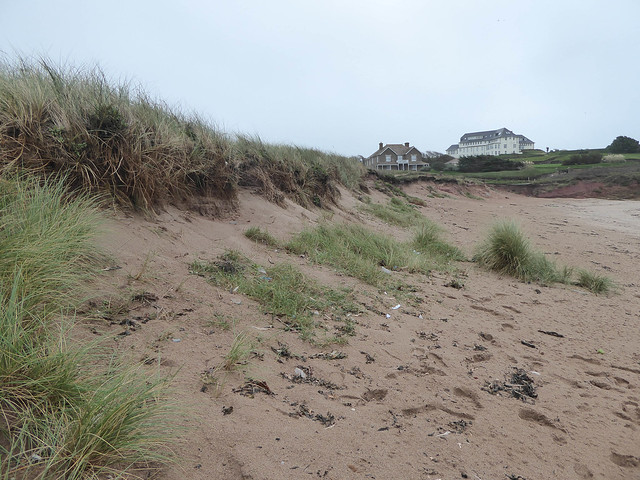
Mist accompanied me for most of the journey down but as I approached the coast, the gloom cleared and there was a hint of brightness in the sky. To the west, the art deco hotel on Burgh Island glowed in a halo of white light and there was even a little milky sunshine at Thurlestone. These luminous promises were destined to be unfulfilled as the sky quickly resumed its overcast state leaving the sea a uniform dull grey-blue. At least it was calm; there was virtually no wind and the waves looked as though they couldn’t be bothered. Perhaps because of the calm, there were birds about, on the beach and on the cliffs, wagtails, corvids and pipits. Compared with my visit a week ago, the tide was much lower, exposing a larger area of beach with several concentric arcs of debris and a mass of dark seaweed at the water’s edge.
The beach at Leas Foot Sands is enclosed on either side by moderate red cliffs and backed by scrappy sand dunes that have suffered badly in previous years’ stormy weather. Today these dunes resembled a piece of conceptual art dedicated to our throwaway culture. All sorts of debris littered the rising sand: many small fragments of plastic, wood and seaweed, feathers, plastic containers and many pieces of plastic wrapping. There was even a battered but colourful drink can that seemed to have come from the Far East. It had obviously been fairly wild when the storm arrived, with high winds and waves reaching right up to the back of the beach; this area had been mostly clean a week ago.
Further down the beach, there were several arcs of debris presumably corresponding to the distance reached by different tides as the storm abated. These strandlines contained small pieces of seaweed, cuttlefish shells, Portuguese Men O’War looking rather sad and deflated with some in pieces, cotton bud stems, colourful rope and fishing tackle.
One of the arcs of debris in the centre of the beach grabbed my attention. It contained some of the same stuff but in lower amounts: a few feathers, small dry pieces of wood and seaweed and the occasional shard of plastic. The big difference was the presence of nurdles, very easy to spot littered among the other debris here. There must have been several hundred of the small, mostly grey, plastic particles spread across the beach in this arc.
Finally, near the water’s edge, there were substantial amounts of shiny dark brown seaweed partly submerged in the shallow water. It looked as though this had been newly collected and dumped by the storm. There was little or no plastic waste in this area.
So, what a difference a storm makes. I wasn’t surprised to see all the litter at the back of the beach given the ferocity of the storm but the nurdles were a shock. A week ago we had been hard pressed to find any nurdles at all whereas today they were plentiful. The challenge now is to understand why the nurdles arrived and why they were apparently concentrated in one strandline.
…………………………………………………..
Our seas and our beaches are contaminated by nurdles, these small pieces of easily transportable plastic used as a raw material for making many of our plastic goods. Nurdles pose many dangers but one obvious concern is that that they will be consumed by seabirds and by fish with dire consequences for their health. Here is a link to more information about nurdles.



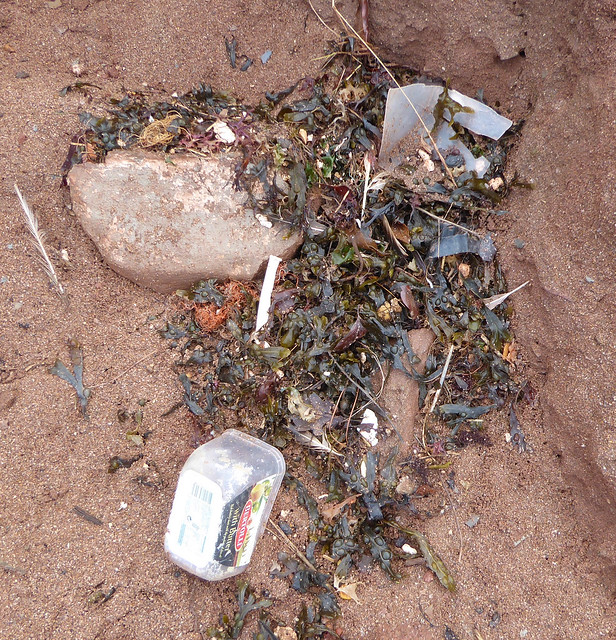
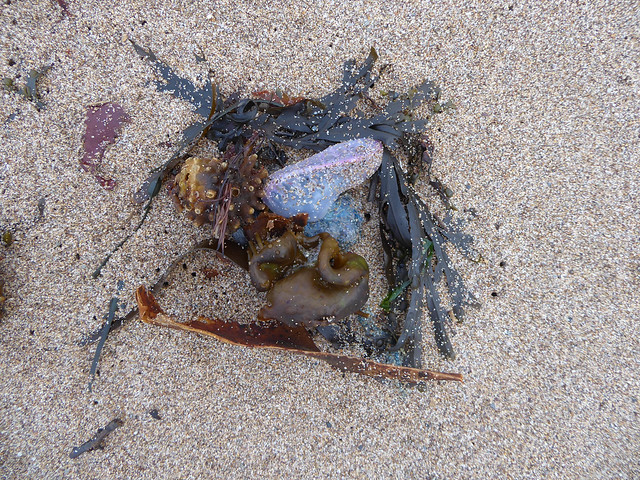
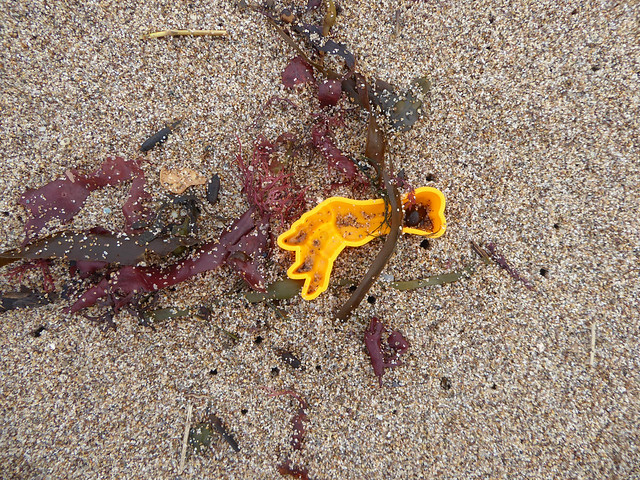
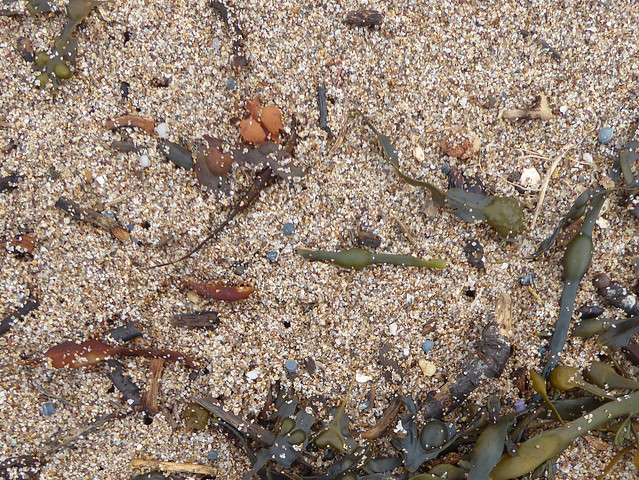
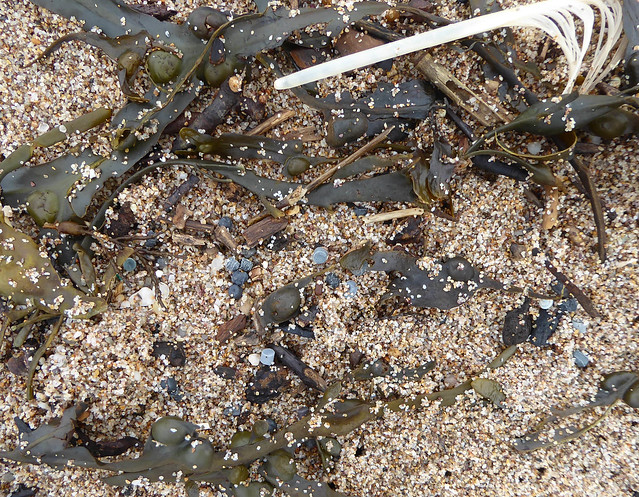
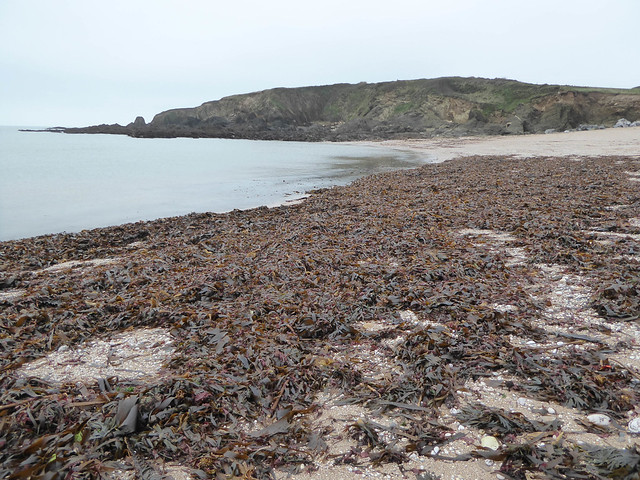


As you say, not unexpected that there was a lot more debris on the beach after the storm but strange that the nurdles should suddenly appear.
LikeLike
I think it must have something to do with tides and the shape of the beach.
LikeLiked by 1 person
Very worrying…
LikeLike
Yes it is!
LikeLike
Thank you for the information. You are the first person whom I have heard talking about this. I will have to get out and search on the beaches near me. Amelia
LikeLike
It’s not a widely discussed topic but I think it is very important. I will be very interested to hear how you get on looking on your local beaches.
LikeLiked by 1 person
It’s amazing how quickly the beach can change. I picked up a bucket full of rubbish off the beach this morning – still didn’t see any nurdles .Sarah x
LikeLike
Well done for picking up the litter. The presence of nurdles seems to be very patchy and I haven’t yet worked out why! This map gives some idea of the patchiness: https://www.nurdlehunt.org.uk/take-part/nurdle-map.html
LikeLiked by 1 person
Having seen plenty of images of the mass Man o’ War strandings in Cornwall, Devon & Dorset… what I didn’t know was that they can sting for hours or even days after they die – and that a severed tentacle can sting too. Incidentally, did you notice the local Library in an old red phone box in the village – very well done!
LikeLike
Yes, the bits of PMoW may be more dangerous as they can be overlooked. It’s possible sometimes to mistake them for plastic waste. The phone box library is wonderful!
LikeLiked by 1 person